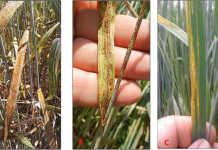BEIJING: Buildings are shrouded in heavy, yellow smog and there is a smell in the air most likely generated by burning coal and biomass fuels.
Chu Yangxi, an associate research professor at the Chinese Research Academy of Environmental Sciences, remembers similar scenes in Beijing about a decade ago, which have since faded into memory.
He witnessed these pollution problems again when he was in Lahore, the capital of Pakistan’s Punjab Province, with two other Chinese environmental experts from Jan 14 to 17.
Local authorities invited the trio to Lahore in the hope o learning from China’s successful efforts to restore clean air and blue skies over Beijing in only a decade.
Chu had previously participated in international exchange programs on air quality management. However, the trip to Pakistan was different.
“It was my first time visiting a country involved in the Belt and Road Initiative for an activity in which I’m in a position to provide scientific and technological support,” he said.
China has received an increasing number of requests from developing countries to learn from the country’s experiences in improving air quality, as they themselves enter a development stage China has already undergone.
What makes China’s efforts appealing to them is that the country has seen its air quality improve while it has expanded its economy at a similar pace, experts said.
The different strategies deployed to control air pollution, which take into account complex national conditions, also make China a good exemplar of air quality management solutions, they said.
In November, Chinese experts were asked to speak about the country’s air pollution control efforts with senior officials in Punjab via an online meeting. However, the Punjab government was still eager to arrange a field visit for them for more exchanges, Chu said. –The Daily Mail-China Daily news exchange item





